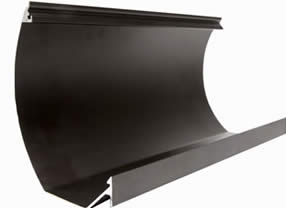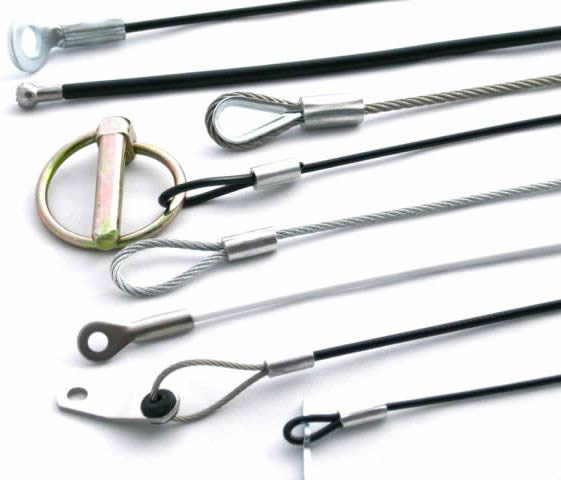Bionanotechnology and nanobiotechnology are terms that refer to the intersection of nanotechnology and biology . Given that the subject is one that has only emerged very recently, bionanotechnology and nanobiotechnology serve as blanket terms for various related technologies.
a, A typical plant cell, illustrating the cell wall (cw), large central vacuole (v), and various organelles (nucleus (n), mitochondria (m), chloroplasts (cp), endoplasmic reticulum (er), golgi (g)) within the cytoplasm (white region). b, After action of the gene gun, MSNs (small circles), carrying the small effector molecule (-estradiol) within the gold-capped structure and externally coated with plasmid DNA, penetrate the cell wall and, in some cases, enter the cytoplasm. c, Within the cytoplasm, the plasmid DNA dissociates from the MSN surface and enters the nucleus (not shown). The MSNs are uncapped by incubating the plant cells with dithiothreitol (DTT). This releases the -oestradiol effector molecules (orange hexagons) and activates expression of the plasmid DNA in the nucleus.
These two terms are often used interchangeably. When a distinction is intended, though, it is based on whether the focus is on applying biological ideas or on studying biology with nanotechnology. Bionanotechnology generally refers to the study of how the goals of nanotechnology can be guided by studying how biological “machines” work and adapting these biological motifs into improving existing nanotechnologies or creating new ones. Nanobiotechnology, on the other hand, refers to the ways that nanotechnology is used to create devices to study biological systems.
In other words, bionanotechnology is essentially miniaturized biotechnology, whereas nanobiotechnology is a specific application of nanotechnology. For example, DNA nanotechnology or cellular engineering would be classified as bionanotechnology because they involve working with biomolecules on the nanoscale. Conversely, many new medical technologies involving nanoparticles as delivery systems or as sensors would be examples of nanobiotechnology since they involve using nanotechnology to advance the goals of biology.
As with nanotechnology and biotechnology, bionanotechnology has many potential ethical issues associated with it. To read more, see Implications of nanotechnology and the main article on biotechnology. The definitions enumerated above will be utilized whenever a distinction between nanobio and bionano is made in this article. However, given the overlapping usage of the terms in modern parlance, individual technologies may need to be evaluated to determine which term is more fitting.
The biological and medical research communities have exploited the unique properties of nanomaterials for various applications, for example: contrast agents for cell imaging and therapeutics for treating cancer.
Man founded technology, nurtured it, needless to say used it to perfection, and now, technology seems to have turned around and leading to ‘payback time’. What you sow, so you reap will be apt in describing the marriage of these two technologies : semiconductors and bio-tech that has transformed into one called nano-biotechnology to form a branch called nanoway.
A techno-monitor : a chip that checks various parameters in a human body, and its functions and help in supplying appropriate potions/drugs to keep it going. Nanotechnology (prefix ‘nano’ means dwarf in Greek) is an amalgamation of science and engineering that has effected the measurment in the lowest units (nanometer - billionth of a meter). Nanotechnology is a valuable contribution of the profound research by scientists and engineers to create new systems with novel functionalities.
This gives nanotechnology greater share of control over a wide range of usage in applications right from high-density data to detecting DNA sequence to improved taste and wider variety of fruits and vegetables. On the commercial front, nanotechnology has enhanced every field in science, engineering, and technology, a phenomenal advantage, thus giving high efficiency and profitability.
Nanotechnology is used to create devices to study biological systems
Biotechnology is the application of biological research techniques to develop products that cater to the need of living beings.Nano-biotechnology, as the name suggests, is a mariage of nanotechnology and biotechnology. Technology is turning around to help the humans by providing easier methods to keep up a healthy living. As the population in the modern times ages, scientists are finding it difficult to manage the right combination of drugs to make them effective. The existing means of intake of drugs orally or through injections are becoming moderately effective and can be extremely painful due to the non-availability of accurate diagnosis.
One of the newer methods to deliver drugs at the right place, time, and amounts is being addressed through nano-biotechnology. Scientists and engineers have come out with new systems where the human-body parameters are monitored using a semiconductor chip that is placed inside a human body. The information recorded/acquired is then transmitted to another wrist-watch like equipment using telemetry, which, in turn, instructs the semiconductor chip to deliver the right amounts of drug to the right place.
Nanobiotechnology: Silver Nanoparticles “Exert Anti-HIV Activity At An Early Stage of Viral Replication”
For example: When a patient is being treated for diabetes, the semiconductor chip monitors the blood-sugar levels and passes on the information to the device outside of the body. The external device, in turn, instructs the semiconductor chip that acts as the drug delivery system, to release the right amounts of insulin into the blood, thus causing less or no side effects to the patient.
Most of the scientific concepts in bionanotechnology are derived from other fields. Biochemical principles that are used to understand the material properties of biological systems are central in bionanotechnology because those same principles are to be used to create new technologies. Material properties and applications studied in bionanoscience include mechanical properties (e.g. deformation, adhesion, failure), electrical/electronic (e.g. electromechanical stimulation, capacitors, energy storage/batteries), optical (e.g. absorption, luminescence, photochemistry), thermal (e.g. thermomutability, thermal management), biological (e.g. how cells interact with nanomaterials, molecular flaws/defects, biosensing, biological mechanisms s.a. mechanosensing), nanoscience of disease (e.g. genetic disease, cancer, organ/tissue failure), as well as computing (e.g. DNA computing). The impact of bionanoscience, achieved through structural and mechanistic analyses of biological processes at nanoscale, is their translation into synthetic and technological applications through nanotechnology.
Nanobiotechnology takes most of its fundamentals from nanotechnology. Nanobiotechnology is often used to describe the overlapping multidisciplinary activities associated with biosensors, particularly where photonics, chemistry, biology, biophysics, nanomedicine, and engineering converge. Measurement in biology using waveguide techniques, such as dual polarisation interferometry, are another example.
Applications of bionanotechnology are extremely widespread. Nanobiotechnology is relatively new to medical, consumer, and corporate bodies. One example of current nanobiotechnological research involves nanospheres coated with fluorescent polymers. Researchers are seeking to design polymers whose fluorescence is quenched when they encounter specific molecules. Different polymers would detect different metabolites. The polymer-coated spheres could become part of new biological assays, and the technology might someday lead to particles which could be introduced into the human body to track down metabolities associated with tumors and other health problems. DNA nanotechnology is one important example of bionanotechnology.
The utilization of the inherent properties of nucleic acids like DNA to create useful materials is a promising area of modern research. Another important area of research involves taking advantage of membrane properties to generate synthetic membranes. Protein folding studies provide a third important avenue of research, but one that has been largely inhibited by our inability to predict protein folding with a sufficiently high degree of accuracy. Given the myriad uses that biological systems have for proteins, though, research into understanding protein folding is of high importance and could prove fruitful for bionanotechnology in the future.
Biotechnology is an advanced branch of medical science and possesses ultimate strengths to deal with life and business. It has made innumerable contributions in the fields of science and technology. It has provided better and effective solutions to improve human health, to cope up with adverse environmental effects, and enabled excellent business opportunities. Studies have demonstrated their work policies and the way; they plan and execute their work as an industry.
Nanobiotechnology is a rapidly advancing area of scientific and technological opportunity that applies the tools and processes of nano/microfabrication to build devices for studying biosystems. Researchers learn from biology to create new micro-nanoscale devices to better understand life processes at the nanoscale.
You might also like
| What is Nanotechnology? Nanotechnology is the engineering... | What is Nanoelectronic ? Nanoelectronics refer to the use of nanotechnology... | Superconductors A superconductor is an element or... | Biomimetics (Biomimicry) Biomimetics (also known as biomimicry,... |





 Alloy Suppliers
Alloy Suppliers
 Aluminum
Aluminum
 Aluminum Extrusions
Aluminum Extrusions
 Copper-Brass-Bronze
Copper-Brass-Bronze
 Nickel
Nickel
 Magnets
Magnets
 Stainless Steel
Stainless Steel
 Stainless Steel Tubing
Stainless Steel Tubing
 Steel Service Centers
Steel Service Centers
 Titanium
Titanium
 Tungsten
Tungsten
 Wire Rope
Wire Rope